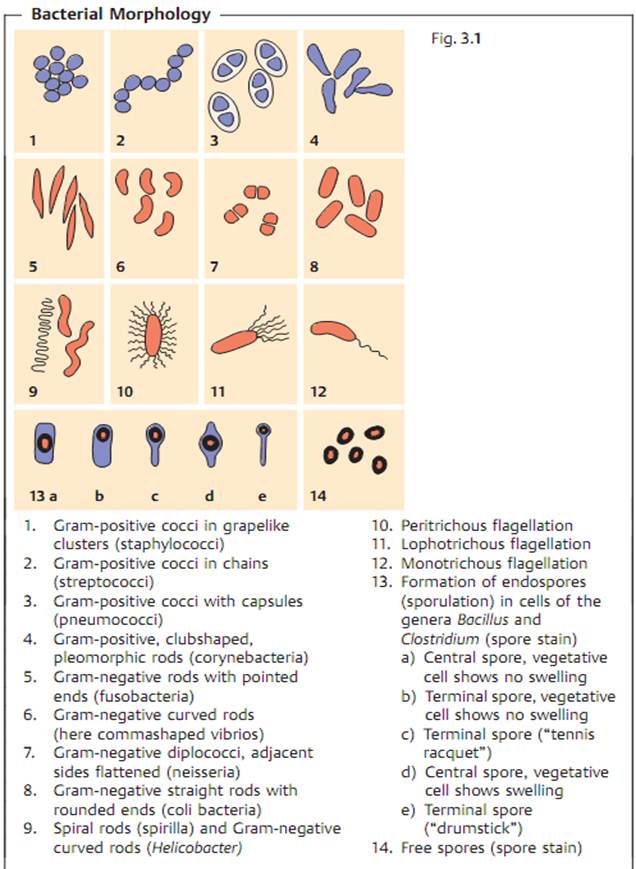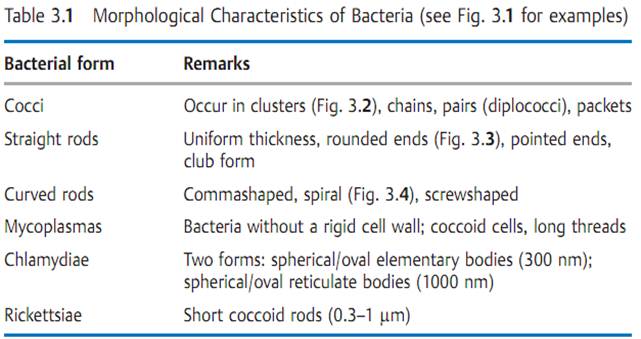

النبات

مواضيع عامة في علم النبات

الجذور - السيقان - الأوراق

النباتات الوعائية واللاوعائية

البذور (مغطاة البذور - عاريات البذور)

الطحالب

النباتات الطبية


الحيوان

مواضيع عامة في علم الحيوان

علم التشريح

التنوع الإحيائي

البايلوجيا الخلوية


الأحياء المجهرية

البكتيريا

الفطريات

الطفيليات

الفايروسات


علم الأمراض

الاورام

الامراض الوراثية

الامراض المناعية

الامراض المدارية

اضطرابات الدورة الدموية

مواضيع عامة في علم الامراض

الحشرات


التقانة الإحيائية

مواضيع عامة في التقانة الإحيائية


التقنية الحيوية المكروبية

التقنية الحيوية والميكروبات

الفعاليات الحيوية

وراثة الاحياء المجهرية

تصنيف الاحياء المجهرية

الاحياء المجهرية في الطبيعة

أيض الاجهاد

التقنية الحيوية والبيئة

التقنية الحيوية والطب

التقنية الحيوية والزراعة

التقنية الحيوية والصناعة

التقنية الحيوية والطاقة

البحار والطحالب الصغيرة

عزل البروتين

هندسة الجينات


التقنية الحياتية النانوية

مفاهيم التقنية الحيوية النانوية

التراكيب النانوية والمجاهر المستخدمة في رؤيتها

تصنيع وتخليق المواد النانوية

تطبيقات التقنية النانوية والحيوية النانوية

الرقائق والمتحسسات الحيوية

المصفوفات المجهرية وحاسوب الدنا

اللقاحات

البيئة والتلوث


علم الأجنة

اعضاء التكاثر وتشكل الاعراس

الاخصاب

التشطر

العصيبة وتشكل الجسيدات

تشكل اللواحق الجنينية

تكون المعيدة وظهور الطبقات الجنينية

مقدمة لعلم الاجنة


الأحياء الجزيئي

مواضيع عامة في الاحياء الجزيئي


علم وظائف الأعضاء


الغدد

مواضيع عامة في الغدد

الغدد الصم و هرموناتها

الجسم تحت السريري

الغدة النخامية

الغدة الكظرية

الغدة التناسلية

الغدة الدرقية والجار الدرقية

الغدة البنكرياسية

الغدة الصنوبرية

مواضيع عامة في علم وظائف الاعضاء

الخلية الحيوانية

الجهاز العصبي

أعضاء الحس

الجهاز العضلي

السوائل الجسمية

الجهاز الدوري والليمف

الجهاز التنفسي

الجهاز الهضمي

الجهاز البولي


المضادات الميكروبية

مواضيع عامة في المضادات الميكروبية

مضادات البكتيريا

مضادات الفطريات

مضادات الطفيليات

مضادات الفايروسات

علم الخلية

الوراثة

الأحياء العامة

المناعة

التحليلات المرضية

الكيمياء الحيوية

مواضيع متنوعة أخرى

الانزيمات
Introduction and Bacterial Forms
المؤلف:
Fritz H. Kayser
المصدر:
Medical Microbiology -2005
الجزء والصفحة:
1-3-2016
3370
Introduction and Bacterial Forms
Bacterial cells are between 0.3 and 5 µm in size. They have three basic forms: cocci, straight rods, and curved or spiral rods. The nucleoid consists of a very thin, long, circular DNA molecular double strand that is not surrounded by a membrane. Among the nonessential genetic structures are the plasmids.
The cytoplasmic membrane harbors numerous proteins such as permeases, cell wall synthesis enzymes, sensor proteins, secretion system proteins, and, in aerobic bacteria, respiratory chain enzymes. The membrane is surrounded by the cell wall, the most important element of which is the supporting murein skeleton.
The cell wall of Gram-negative bacteria features a porous outer membrane into the outer surface of which the lipopolysaccharide responsible for the pathogenesis of Gram-negative infections is integrated. The cell wall of Gram-positive bacteria does not possess such an outer membrane. Its murein layer is thicker and contains teichoic acids and wall-associated proteins that contribute to the pathogenic process in Gram-positive infections.
Many bacteria have capsules made of polysaccharides that protect them from phagocytosis. Attachment pili or fimbriae facilitate adhesion to host cells. Motile bacteria possess flagella. Foreign body infections are caused by bacteria that form a biofilm on inert surfaces. Some bacteria produce spores, dormant forms that are highly resistant to chemical and physical noxae.
Bacteria differ from other single-cell microorganisms in both their cell structure and size, which varies from 0.3-5 im. Magnifications of 500- 1000x—close to the resolution limits of light microscopy—are required to obtain useful images of bacteria. Another problem is that the structures of objects the size of bacteria offer little visual contrast. Techniques like phase contrast and dark field microscopy, both of which allow for live cell observation, are used to overcome this difficulty. Chemical-staining techniques are also used, but the prepared specimens are dead.


- Simple staining. In this technique, a single staining substance, e.g., methylene blue, is used.
- Differential staining. Two stains with differing affinities to different bac¬teria are used in differential staining techniques, the most important of which is gram staining. Gram-positive bacteria stain blue-violet, Gram-negative bacteria stain red.
Three basic forms are observed in bacteria: spherical, straight rods, and curved rods (see Figs. 3.1).
 الاكثر قراءة في البكتيريا
الاكثر قراءة في البكتيريا
 اخر الاخبار
اخر الاخبار
اخبار العتبة العباسية المقدسة

الآخبار الصحية















 قسم الشؤون الفكرية يصدر كتاباً يوثق تاريخ السدانة في العتبة العباسية المقدسة
قسم الشؤون الفكرية يصدر كتاباً يوثق تاريخ السدانة في العتبة العباسية المقدسة "المهمة".. إصدار قصصي يوثّق القصص الفائزة في مسابقة فتوى الدفاع المقدسة للقصة القصيرة
"المهمة".. إصدار قصصي يوثّق القصص الفائزة في مسابقة فتوى الدفاع المقدسة للقصة القصيرة (نوافذ).. إصدار أدبي يوثق القصص الفائزة في مسابقة الإمام العسكري (عليه السلام)
(نوافذ).. إصدار أدبي يوثق القصص الفائزة في مسابقة الإمام العسكري (عليه السلام)


















